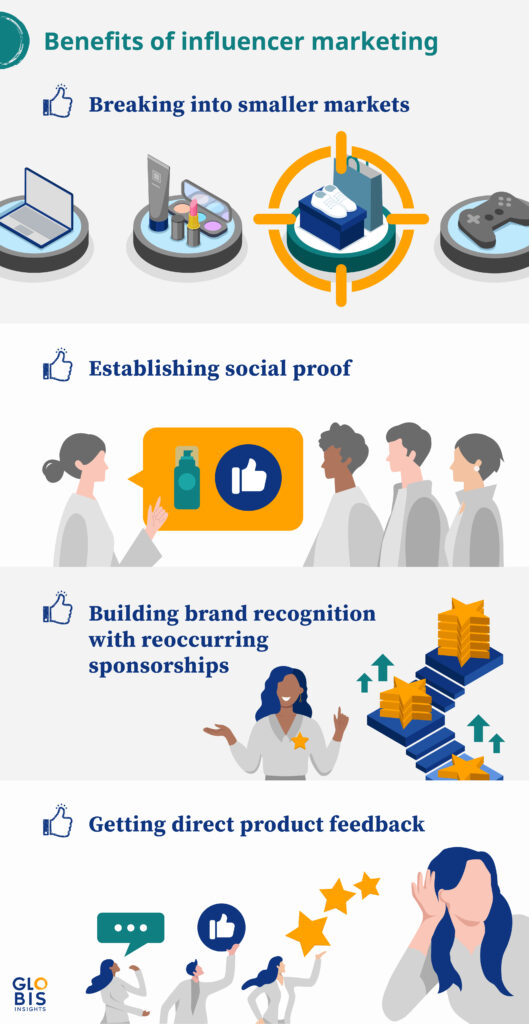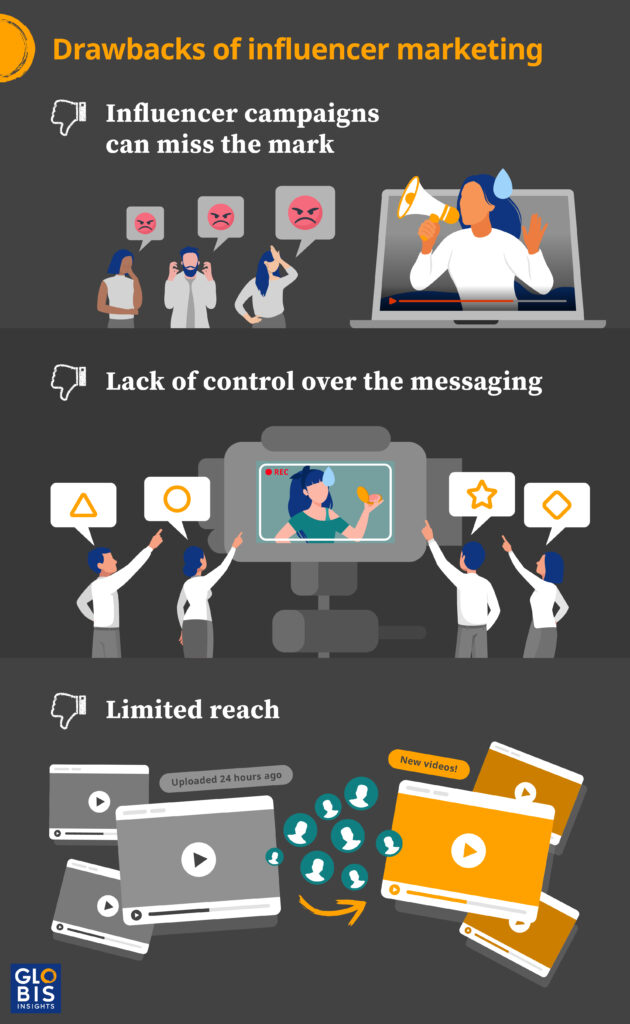Do you want to be an influencer? Gen Z certainly does. In fact, media and entertainment are now the top industries young Americans want to work in.
Over the past ten years, online content has shifted from a maligned side project to a full-blown career possibility. And with the influencer market estimated at 21.2 billion for 2023, companies are quickly adapting their marketing strategies to include content creators across different platforms.
While traditional celebrity culture is aspirational, online content creators invite you into homes and comment sections. This growing market of influencer-driven parasocial relationships (meaning you know a lot about them, but they know little-to-nothing about you) is giving companies direct access to pre-segmented markets. But like any type of marketing, it has pros and cons.
What is one-to-one marketing?
“This has been a game changer for me, so I wanted to share it with you”.
Influencers often break the fourth wall and speak directly to viewers. It helps to build a rapport, but it’s also an effective sales technique. It’s a new style of one-to-one marketing—catering to individual leads and nurturing them. Whether it’s responding to video comments, chats on livestreams, or even direct messages, influencers are accessible to their audience.
It’s celebrity culture, personal connection, and door-to-door salesperson all wrapped into one. And it’s working.
The benefits of influencer marketing
Breaking into smaller markets
Most influencers have a set type of content (lifestyle, beauty, technology, entertainment, etc.) which means the market segmenting is already done for you.
- Are you looking for fifteen-to-thirty-five-year-old gamers for your new version of noise-canceling headphones?
- What about Japanese skincare enthusiasts living in the UK?
- Or busy fitness fans who would be responsive to a personalized training app?
For each of these markets, there are influencers with content and a subscriber base that match the product. Moreover, they likely have followers who might not be on your radar as potential customers, so you get to cast a wider net.
Targeting niche markets through a social ad campaign would be tricky at best, but if an influencer has a loyal following and a good sponsorship track record, your product will get a solid pitch in front of a pre-tailored audience.

Establishing social proof
Building up brand trust takes time. And most newly established companies don’t have that luxury. This is where influencer marketing comes in.
A customer may not know your brand, but if they’ve been following a content creator’s journey for months or years, they’ve already established a connection to that person. If someone’s favorite influencer promotes a product, it can hold the same weight as a friend’s recommendation.
For many companies, influencer marketing is an efficient way to piggyback off the social proof a content creator has spent months, years, or more, establishing.
Audiences don’t want infomercials where everything magically works out. They want to see the full process—warts and all. This is where influencers can give your potential customers a behind-the-scenes look at whether your product is worth the investment.
Building brand recognition with long-term relationships
Many content creators are selective about which brands they partner with. Taking into consideration if the product will be a good fit for their subscribers and worth their money. But if you find a match between your brand and a creator, this could be the start of an ongoing collaboration that means you get continued exposure to a repeat and growing audience. There’s the potential to build brand recognition and customer loyalty with multiple chances to make and tweak the pitch.
Get direct feedback on your product
When was the last time you emailed a company to give feedback? Unless you’re super diligent about correspondence, most people don’t bother. However, in an online community, people are more likely to share their experiences with a product or service because it’s participating in a conversation.
For companies, these comment threads are a goldmine for market research data. The influencer has direct interaction with customers (often in real-time) and these messages can give insight into what changes their audience would be receptive to. Giving you a chance to improve the customer experience before the next collaboration.
Next Article
Likeability Leads To Success: The Liking Principle
The Marketing Miracle Behind KFC in Japan for Christmas
How One Woman Is Promoting Digitalization and Diversity for a New Age of Marketing
The drawbacks of influencer marketing
Influencer campaigns can miss the mark
From Pepsi trying to profit off the BLM movement to Christiano Ronaldo promoting a Japanese face muscle strengthener, poorly-positioned campaigns can go wrong very quickly.
Consumers are savvy these days and understand that sponsorships pay the bills. But if an influencer has a fall from grace, or there is a mismatch between the values of the person and the company, your marketing efforts can all come to nothing.

Lack of control over the messaging
While you may want the sales pitch to come off naturally and the influencer to be an authentic ambassador for a product, this comes at the risk of letting go of creative control.
Going off script or including outtakes can be endearing to an audience, but there’s always the risk that a content creator goes too far off course. When you don’t have a trained marketing team to review posts before they are published, you can have instances like the suggested copy being posted verbatim or sponsorship disclosure laws being ignored.
Limited reach
Everyone is chasing a viral video, but the competition is fierce. It can be a gamble if your sponsorship segment will reach your engagement metrics and audiences can be fickle.
Even if you’re partnering with a macro influencer (100,000 to 1 million followers) that doesn’t mean you’ll get 1 million impressions on a social media platform. And compared to a social ad campaign, there’s no option to boost a post or do A/B testing.
In fact, on YouTube, how a video performs in the first 24 hours is considered the critical break-out period for new content. So if a video doesn’t do well right out the gate, it can be hard to recover.
How popular is unscripted entertainment?
Despite the incredible selection of content these days via streaming services, the numbers show viewership of unscripted entertainment on social media is growing quickly. For example, while Netflix has about 200 million subscribers, MrBeast, one of the biggest channels on YouTube, gets over 211 million views per month. TikTok has about 30 million active users per day.
That’s a lot of potential views for advertisers.
Should you invest in influencer marketing?
Like most marketing campaigns, there’s no guarantee of success. But in the US, companies are now spending more on influencer marketing on social ads. So even if you aren’t ready to dive into influencer marketing, your competitor likely is.






